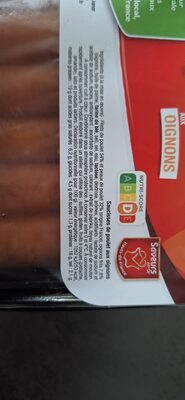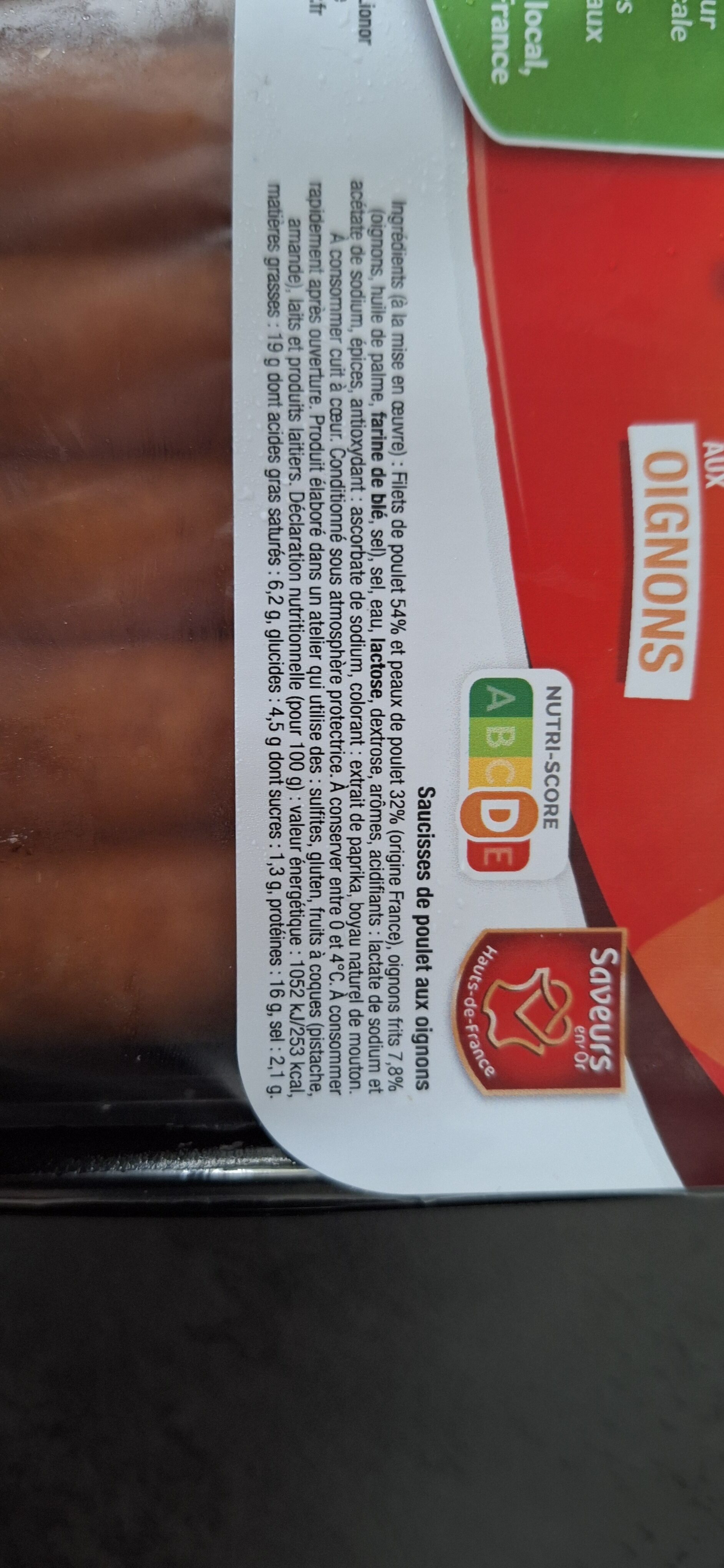Saucisses de Filet de Poulet aux oignons - Lionor - 300 g (6 x 50g)
This product page is not complete. You can help to complete it by editing it and adding more data from the photos we have, or by taking more photos using the app for Android or iPhone/iPad. Thank you!
×
Barcode: 3237970000458 (EAN / EAN-13)
Common name: Saucisses de Filet de Poulet aux oignons
Quantity: 300 g (6 x 50g)
Packaging: Plastic, Fresh, Tray
Brands: Lionor
Categories: Meats and their products, Meat preparations, Meats, Prepared meats, Chicken and its products, Poultries, Sausages, Chicken preparations, Chickens, Poultry sausages, Chicken sausages
Labels, certifications, awards:
Nutriscore, fr:Saveurs en Or, fr:100 % Local
Manufacturing or processing places: France, Hauts de France
Traceability code: FR 59.578.001 CE - Steenbecque (Nord, France)
Link to the product page on the official site of the producer: http://www.lionor.fr
Stores: Simply Market, Auchan
Countries where sold: France
Matching with your preferences
Environment
Carbon footprint
Packaging
Transportation
Threatened species
Report a problem
Data sources
Product added on by tacite
Last edit of product page on by foodvisor.
Product page also edited by elttor, eric62150, kiliweb, packbot, roboto-app, sophiecool62, yuka.ZnI5YkRmMHIrK3RhbHZOaTlUT0k4Tk5NK1lTVEEyenRjdmM4SVE9PQ.








